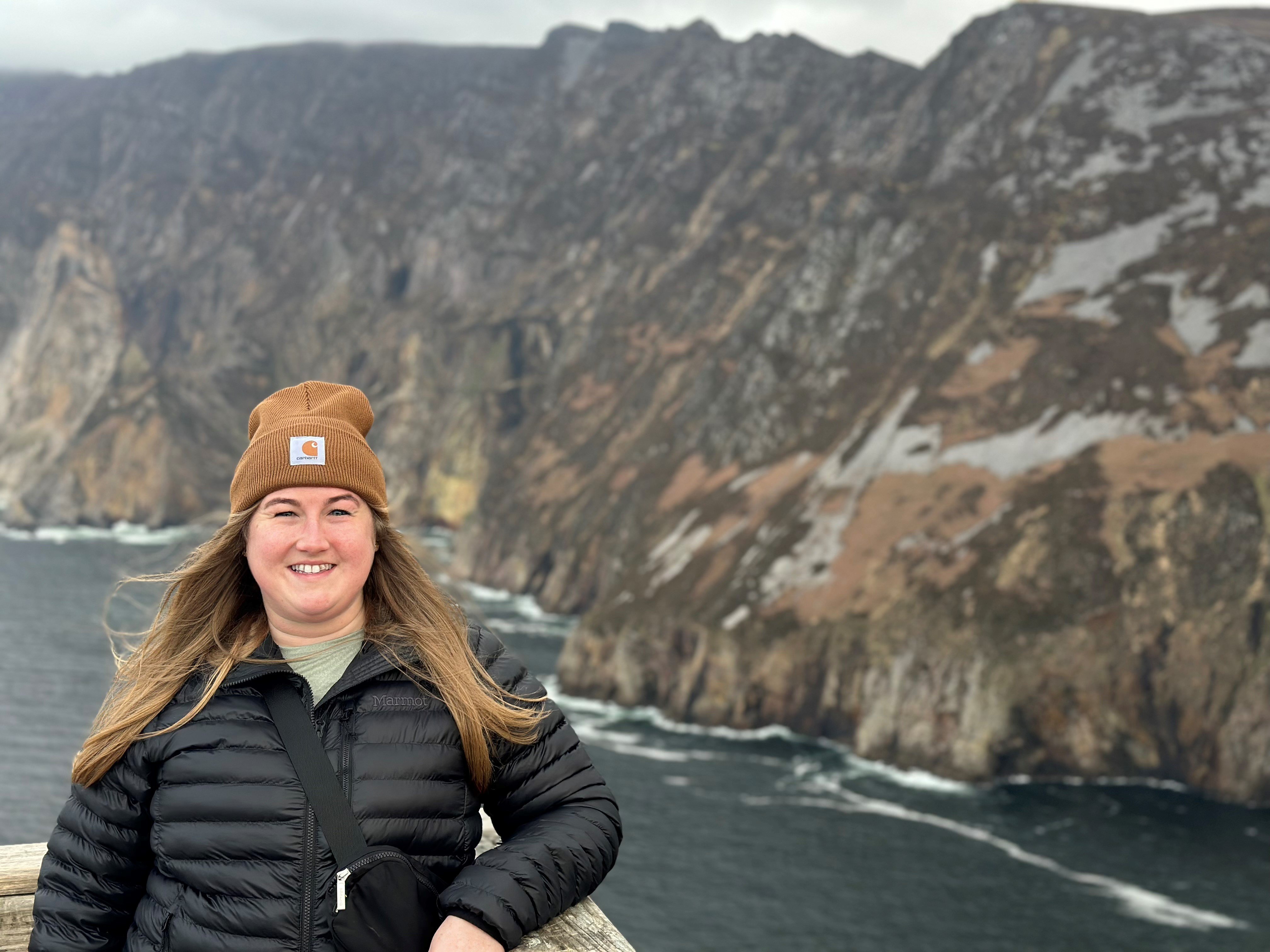
By Carrie Elliot, M.A., CCC-SLP
My name is Carrie Elliot. I am both an Assistive Technology Specialist and a Speech-Language Pathologist at Seattle Public Schools. I am a cisgender able-bodied white woman and my pronouns are she/her/hers.
- Power and Privilege Acknowledgement: I recognize my privilege and power as a cisgender able-bodied heterosexual white woman.
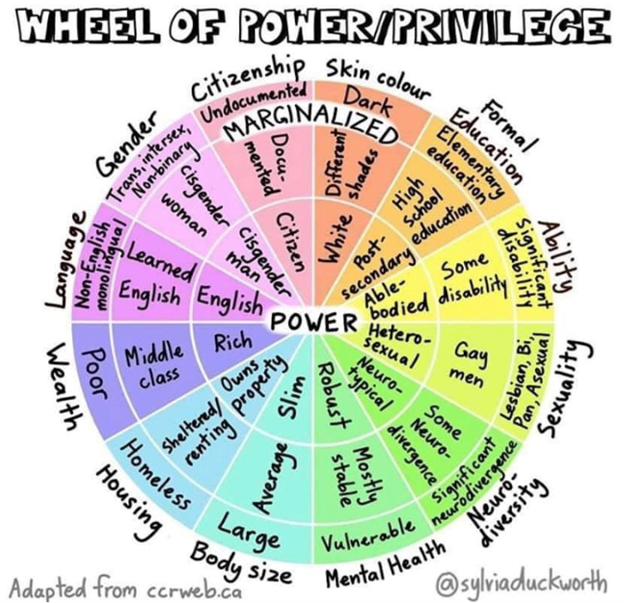
(Duckworth, 2020) Image Source: Wheel of Power and Privilege
The field of Augmentative and Alternative Communication (AAC) has developed and expanded from the first AAC device to high technology solutions such as eye gaze systems and increasingly common household items, such as iPads with communication apps. Over the last several decades, gains have been made in technology, education/implementation and equitable access to equipment. However, the journey continues. AAC has changed a lot even in just my career of 10 years. One change I have been pleased to see is the inclusion of choice for skin tone in systems, which happened in 2020. This change was a response to the Black Lives Matter protests in 2020. In terms of representation, that was a great start.
While many positive changes have occurred over this time, there are some unfortunate legacies that persist. Our AAC community needs to respond more rapidly to cultural needs and requests to support those without the same power and privilege. In order to initiate these changes, it’s important that AAC Manufacturers actively continue these conversations to make the needed modifications for our community as a whole.
Representation matters, and unfortunately, not all users have been represented in their AAC system. There are a lot of great voices sharing this message and their perspective. One podcast episode in particular I would recommend to anyone interested in this topic is from Talking with Tech – Episode 194 with India Ochs.
One of the areas that still requires change is pronouns and inclusion of nonbinary folx.
I attended an amazing training that the Speech-Language Pathology Department for my school district hosted, presented by Q Inclusion. One of the things I appreciated discussing was the harm that the gender binary can cause for everyone in our society, even cisgender people. By requiring all people to be defined as “female” or “male” creates invisible boundaries within our society, limiting freedom of expression and choice. We only have to look to history, where many examples exist of females impersonating men to obtain professional goals such as becoming an author or doctor. The examples today may be more subtle but still as harmful. The Q Inclusion This training absolutely shifted my perspective and comfort level in this work. In my ideal world, every person who works with students who use AAC would attend trainings on this topic.
One student I work with uses they/them pronouns. Because of my privilege as a cisgender female, I didn’t have to consider the layout of a device in this way until I worked with this student who uses these pronouns. My hope is in the future, SLP’s won’t first think about this 10 years into their career (like me).
This student uses TouchChat HD W/ WordPower, with the file WordPower 60 Basic. There are a couple key pages that I made changes to in order to make the vocabulary more inclusive:
- PEOPLE
- PERSONAL & QUESTIONS page (under SOCIAL)
- GROUPS: many individual pages, especially the ANIMALS
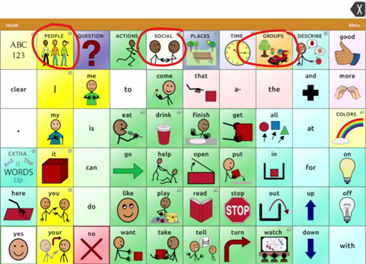
1. People
![]()
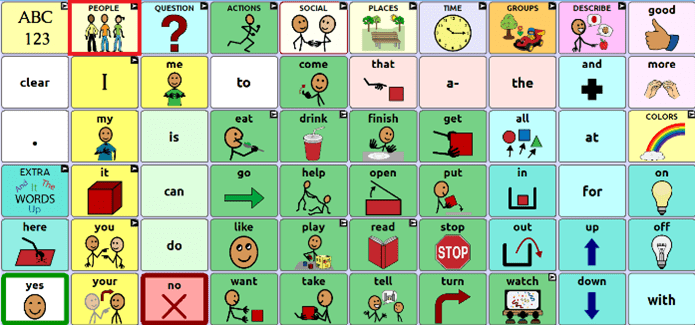
Original File: Before – Pink and blue colors assigned to he and she.
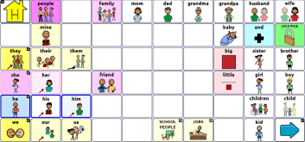
After: Modifying the Page to Support Gender as a Spectrum
- People words are all yellow following the color coding from the main page (following Fitzgerald Key)
- This does not associate colors with a particular pronoun, which supports gender as a spectrum
- Use of Hide Mode to reduce visual distraction and increase contrast
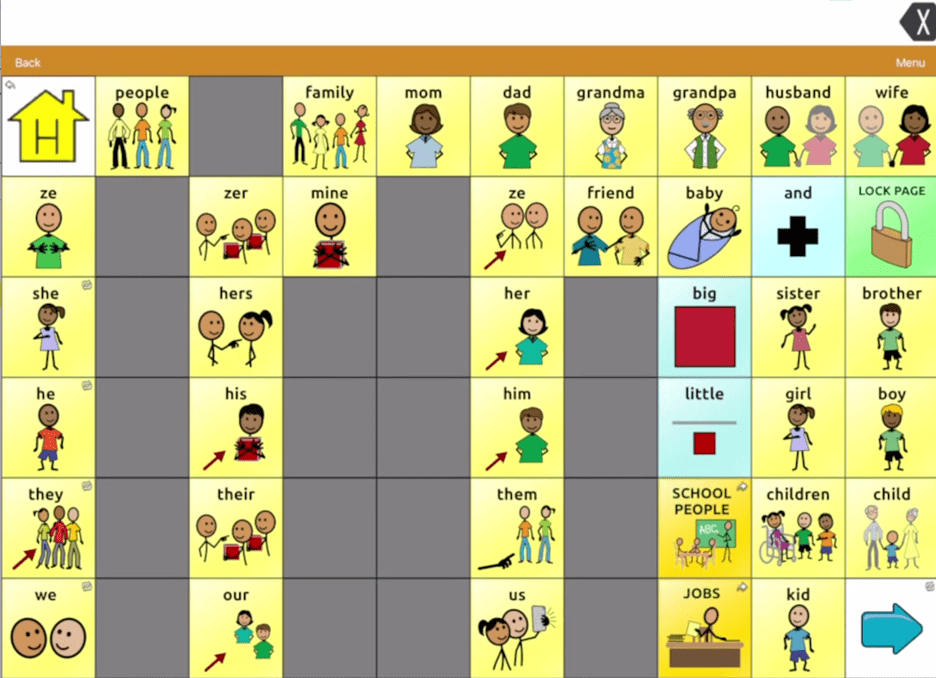
2. SOCIAL-PERSONAL & QUESTIONS

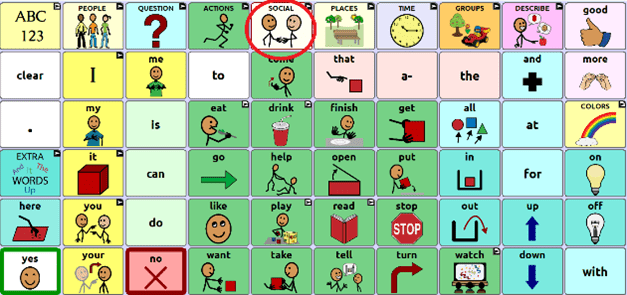
Original File: Before - Introductory questions and responses designed for early language users
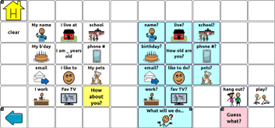
After: Modifying the Page to Support Conversations around Gender
- Added “My pronouns are” button
- Added “What are your pronouns?” button in mirror location in Question section
- Use of Hide Mode to reduce visual distraction and increase contrast
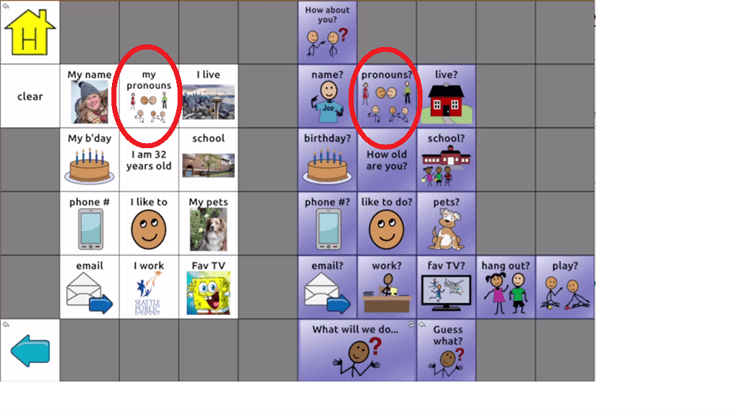
3. GROUPS
In many of the folders under Groups, pronouns continue to have Pink/Blue backgrounds for She/He. I went through and changed those as well.
Original File: Before - Pink and blue background for "she" and "he" buttons
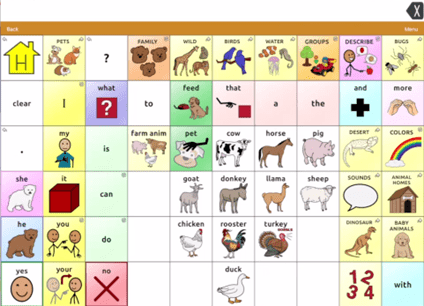
After: Modifying the Page to Support Gender as a Spectrum
- Assigned yellow button background to “she” and “he” buttons
- Use of Hide Mode to reduce visual distraction and increase contrast
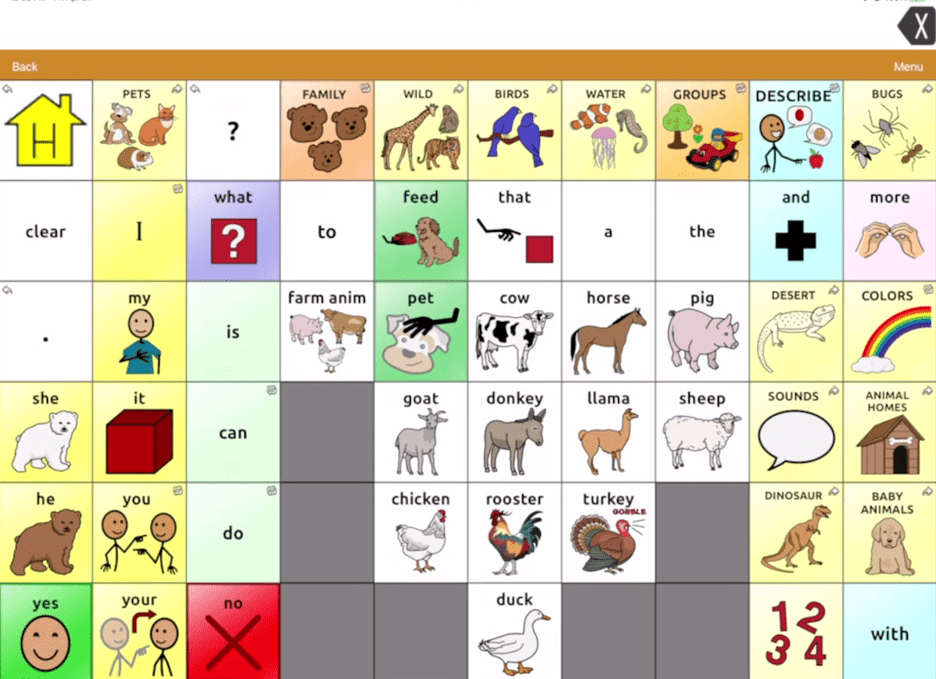
I would love if all systems could apply changes that promote inclusion and representation. The less time service providers have to spend making all of these edits on an individual basis, the more time can be spent on other aspects of culturally responsive service delivery. However, I recognize that in the field of Augmentative and Alternative Communication there are a variety of needs that cannot always be met when we generalize features. For example, individuals with Cortical Vision Impairment are able to access devices effectively when high contrast images are used but these same high contrast images are not always the most effective symbol use for all individuals.
After: Modifying the Page to Support Cortical Visual Impairment
- High contrast (brightly colored, less detailed images) are included to aid in visual support
- Black background on page to further aid in visual support.
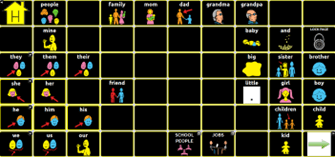
This is an important conversation that needs to continue to be discussed, debated and acted upon. When we know better, we can do better.
Here are just some ideas I had and implemented. All systems have the ability to be customized to promote inclusion and representation. Please share if you have others!
There are no comments yet. Be the first to post!You must be logged in to post.
Making AAC Work - pronoun









